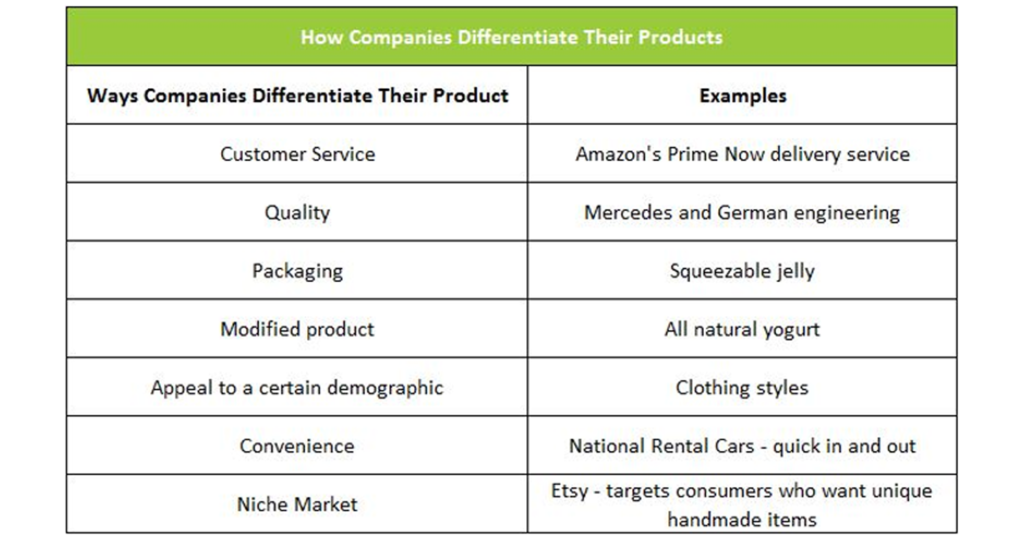
While healthy competition is important to a well-functioning marketplace, price undercutters and copycats in business create an unfair market advantage. Predatory pricing and copying the ideas of others creates an imbalanced monopolization of industry.
Every company wants to attract customers and beat out the competition. Some businesses do this by offering similar products at much lower prices. This is especially concerning to business owners now, as 67% have had to raise their prices due to inflation. Other companies create knock-off versions of established brands to offer customers a more affordable (and more attractive) option.
Keep reading to learn how to deal with price undercutters and copycats in business so you can continue to attract and convert customers in your industry.
Key Takeaways
- Lowering prices is often unsustainable and has a negative impact on profits.
- By focusing on customer value, experience, and creating an effective marketing strategy, you can continue to set yourself apart from the competition.
- When you encounter copycats, address the issue, focus on your strengths, and continue to prove to your customers why you deserve their loyalty.
3 Ways to Deal With Price Undercutters
As the cost of everything rises, more businesses find themselves at risk of entering a price war with competitors. Predatory pricing is when a company undercuts other businesses and offers their products at such a low cost that other suppliers aren’t able to compete. This is bad for the consumer because:
- Prices will eventually increase
- Choices are eliminated
- Innovation suffers
It’s typically best to avoid lowering your prices in these scenarios because it sets a precedent that’s hard to sustain, and it usually cuts into your profits. So, what do you do when you realize a competitor is offering similar goods and services at prices that you can’t match? While some companies sue the businesses who are drastically lowering their prices, this video suggests other ways to remain competitive while continuing to charge fair prices for your products and services:
Here are three ways to deal with price undercutters.
1. Focus on Value
There’s truth to the old adage “you get what you pay for.” When it comes to offering quality products and services, price isn’t everything. People would rather spend a little more money on products and services that are superior and have more longevity.
Shift your customers’ perceptions to appreciate the value of your offerings. There must be more than price that sets you apart from other options in the marketplace. Highlight the features and benefits that your services bring that others can’t. Provide demonstration videos to walk customers through your offerings. Show people that your slightly higher prices are worth the value of the purchase.
2. Win with Customer Experience
Today’s consumers are more driven by a positive customer experience than they are by price. In fact, 86% of people are willing to pay more for a great user experience. Instead of worrying about your price point, focus your efforts on offering superior customer service. Be sure to:
- Create convenient and positive online purchasing options
- Connect with your audience on an emotional level
- Build a relationship founded on trust
When customers enjoy their experience with your publication, they’ll become loyal advocates for your company and spread the word to their own contacts. This expands your reach and drives quality leads to your business, helping you grow page count, grow distribution, and generate more revenue.

3. Rethink Your Strategy
There will always be competitors who want to woo your customers away from you. Be on the lookout for price undercutters who sacrifice originality, use low-wage markets, or implement low-cost shipping. By reducing overhead costs, they’re broadcasting their intention to lower product prices. Watch for companies looking to enter new markets or unveil new products and determine, based on the market, whether their plans are sustainable.
If you see a likelihood of price undercutting, begin to focus on product differentiation and create a marketing strategy that appeals to your customers’ needs. As an advertisers business, you have plenty to offer that outweighs price alone.
How to Deal With Copycats in Business
Although it’s a good idea to keep an eye on your competitors to see what tactics are working for them and what improvements you could be making in your market, copycats in business have a negative impact. Customers will notice when a business isn’t being authentic. Copying a competitor shows a lack of originality and can damage a reputation. Here are three ways to handle copycats in business.
1. Address the Issue
If you discover a company is copying your ideas, it’s best to face the issue head-on. Reach out to that company and challenge their claims, question their behavior, and let them know you’re aware of their tactics. Engaging in a civil discussion could reveal important insight as to their true motives and possibly alert them to employees who are acting against their company values. Such a discussion might give you information that shapes your own strategies and enables you to rethink the direction of your newspaper printing business.
If you discover that your competitors are in fact blatantly using your ideas, you can issue a cease and desist order and pursue legal action if necessary.
2. Focus on Your Unique Traits
No matter what companies do to emulate your business, you are the only company that possesses your unique traits. Focus on those aspects of your company and leverage your benefits and advantages to attract new business and retain your current customers. Don’t expend energy trying to combat copycat companies. Instead, channel that energy into promoting the differences that help you stand out from others in your industry.
Focus on your superior products and excellent customer service. Continue to build trust and brand loyalty among your followers. Develop deep, meaningful relationships with your customers. The more connected you are to your audience, the less likely they’ll be swayed by inferior copycat products and services.

3. Invest in Innovation
It’s hard to hit a moving target. Stay ahead of your copycat imitators by constantly finding new and creative ways to provide solutions to your audience. Keep up with ever-changing technologies and the latest industry standards. You should always be learning and adapting to stay current, relevant, and ahead of the curve in an evolving marketplace. Think of innovative ways to improve your current offerings, develop new products and services, and remain superior to your competition.
Rather than being shaken by copycats, use their imitation as motivation. Knowing that businesses are watching you should drive you to be a leader in your field. Strive for excellence and prove to your customers why they should continue to purchase from you.
Establish Yourself as a Leader in Your Industry
BOOM Communications provides printing, marketing, and advertising solutions to set you apart from the competition and help you build a loyal following.
Contact BOOM Communications today to learn how to establish yourself as a leader in your industry.
